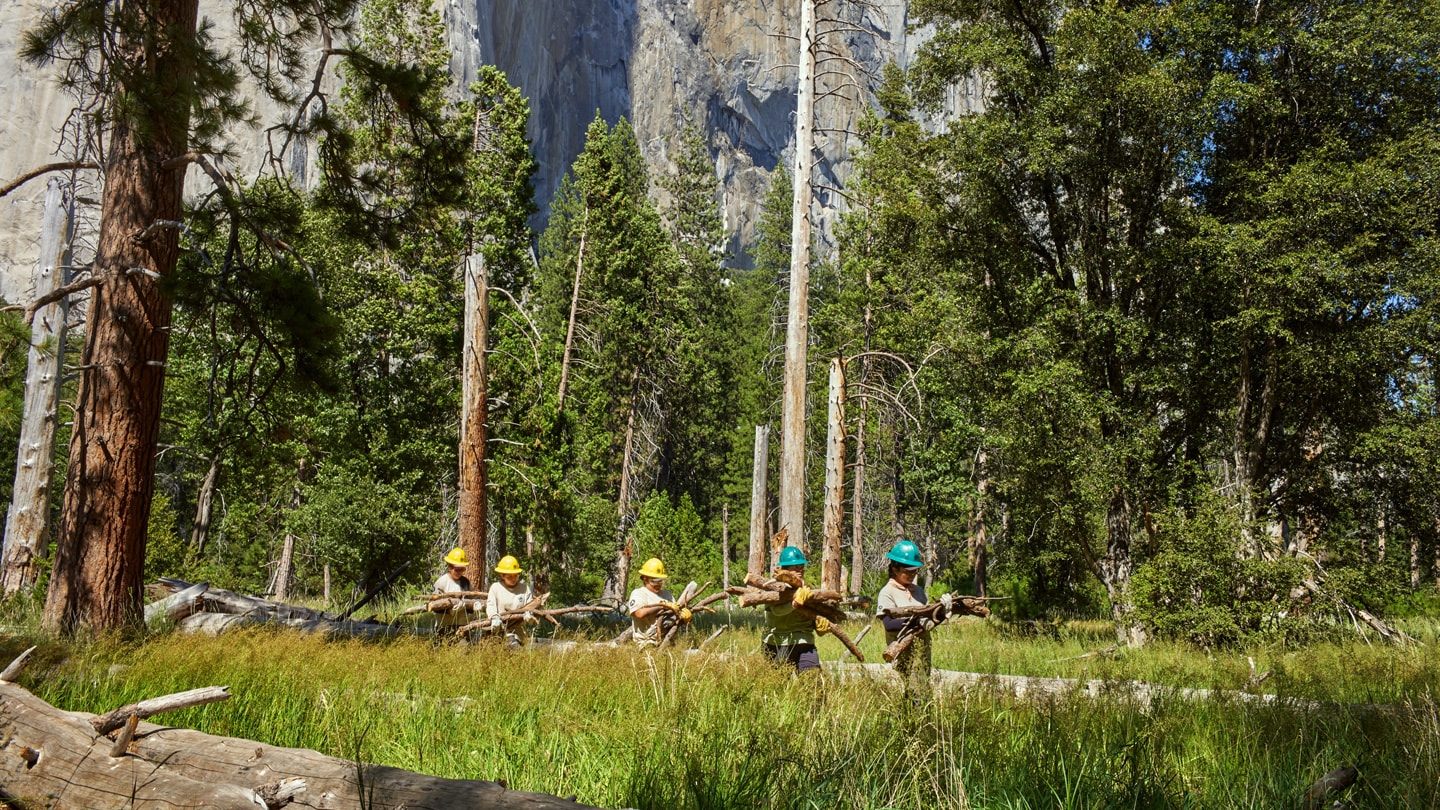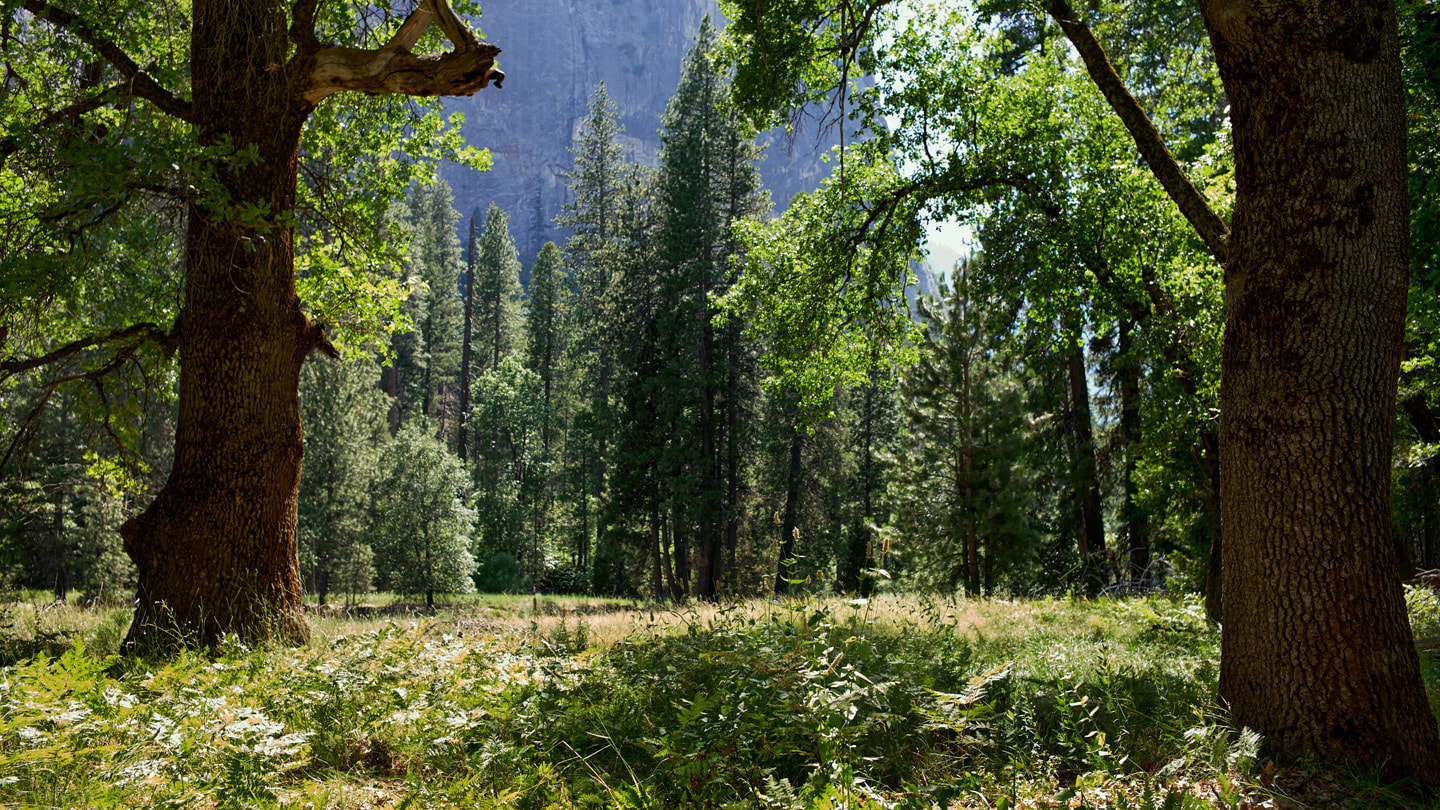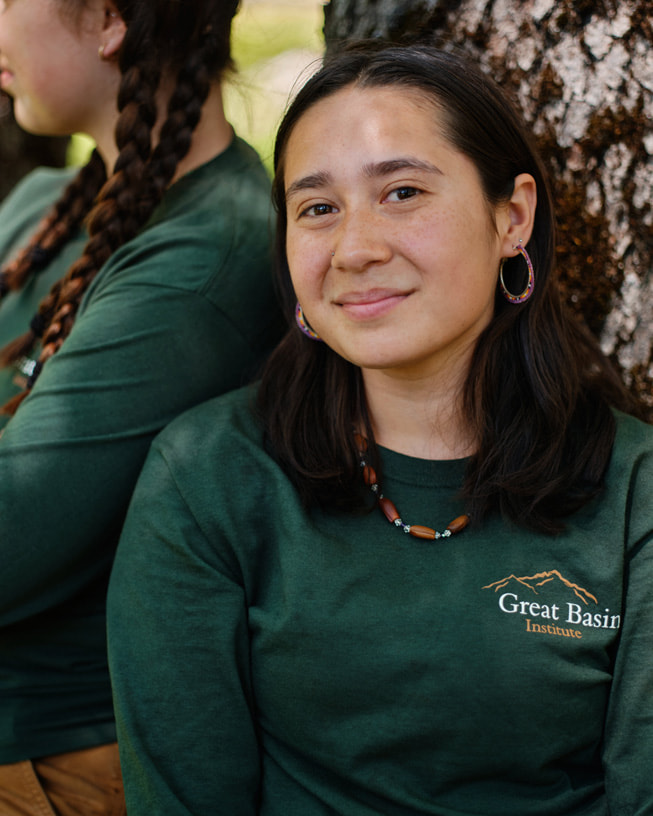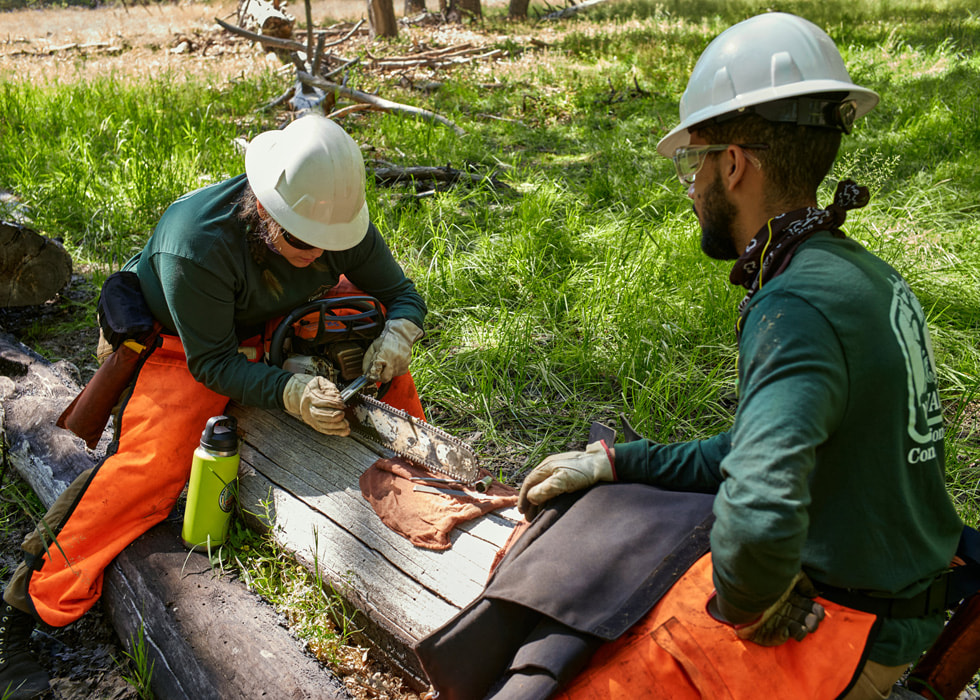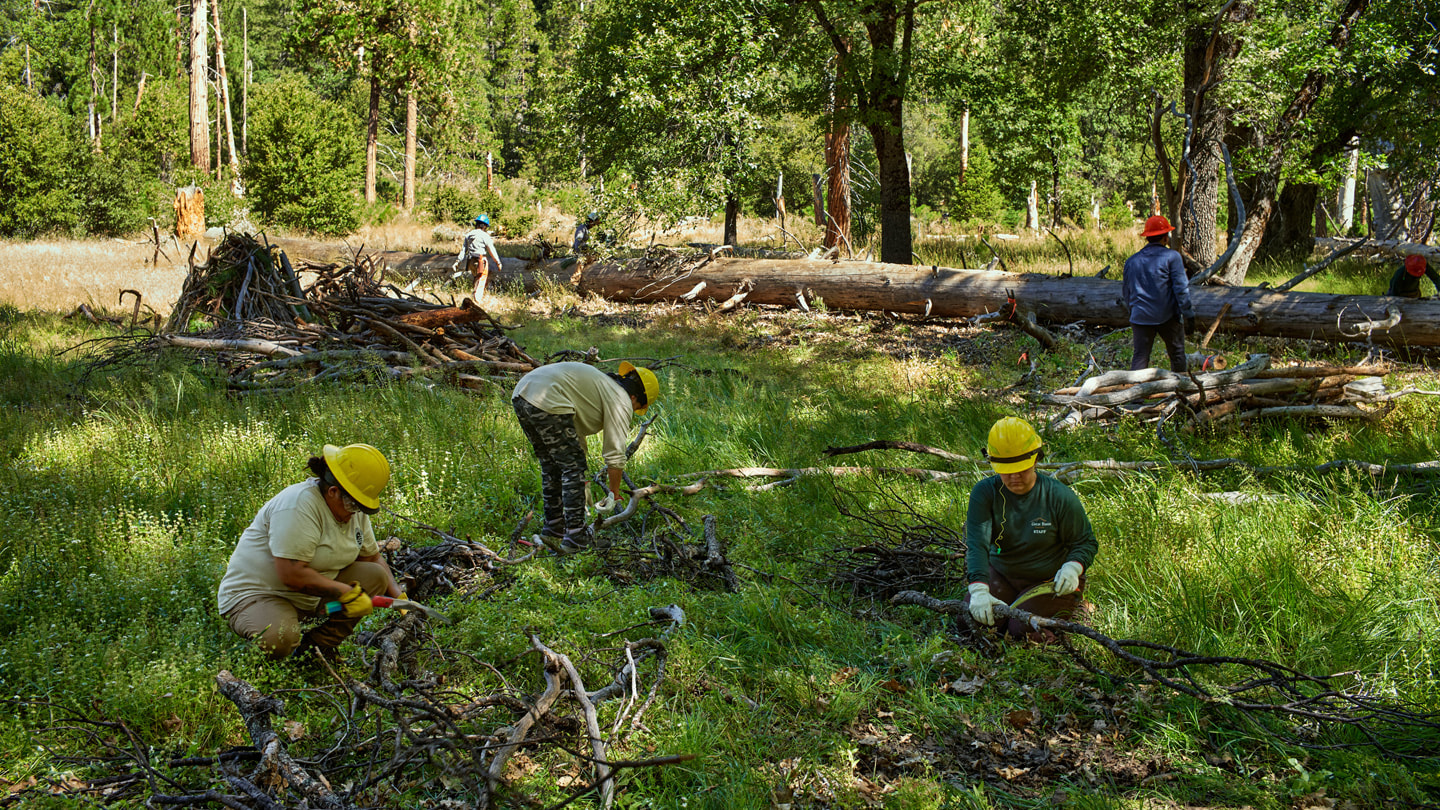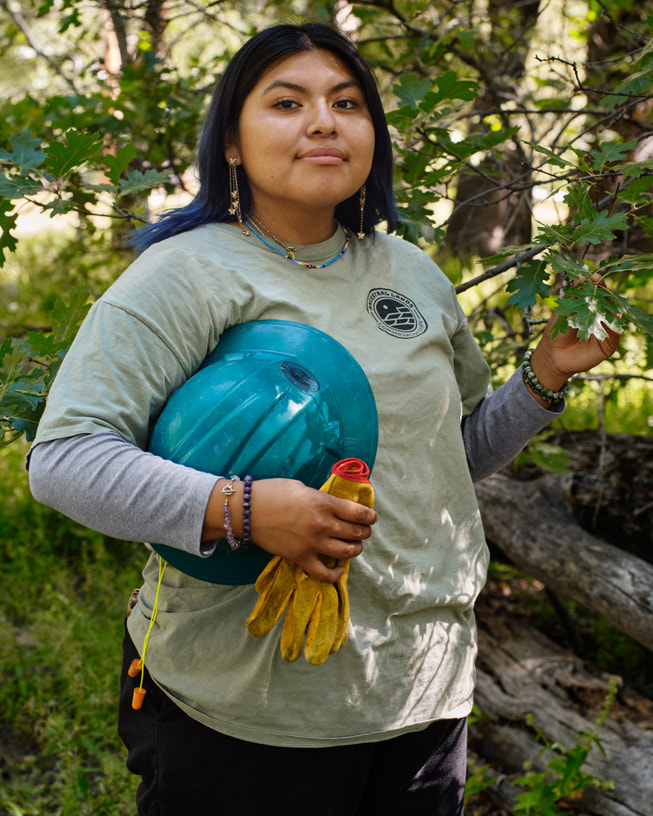apple stories
A new generation preserves tribal land and culture in America’s national parks
The National Park Foundation, an Apple partner, funds Yosemite Ancestral Stewards and Ancestral Lands Conservation Corps work to restore a sacred black oak grove in El Capitan Meadow
At the base of Yosemite National Park’s 7,573-foot-tall El Capitan lies a grove of black oak trees. As the wind blows, their leaves rustle like whispers to each other. Meanwhile, passersby stumble off the beaten path, seeking an up-close view of El Capitan’s pure granite rock face. These wanderers create social trails, as they’re called, which occur when park visitors repeatedly veer off planned routes and follow trotted-down footpaths through meadows and other grasslands. They’re one of many threats to this black oak grove that is sacred to the seven traditionally associated tribes and communities of Yosemite: the Southern Sierra Miwuk Nation, the Tuolumne Band of Me-Wuk Indians, the Bishop Paiute Tribe, Bridgeport Indian Colony, Kutzadika’a Mono Lake Indian Community, North Fork Rancheria of Mono Indians of California, and the Picayune Rancheria of Chukchansi Indians.
“It takes a very long time for those things to come back,” Nellie Tucker, crew leader for this season’s Yosemite Ancestral Stewards program (YAS) — who is also Southern Sierra Miwuk and Paiute — explains about social trails. “That’s one less blade of grass that a butterfly can land on, or something can eat. And then it becomes another space for invasive plants.”
This summer, the black oak grove in El Capitan Meadow is being restored by YAS alongside the Ancestral Lands Conservation Corps (ALCC), a group of Indigenous youth passionate about protecting the land and culture of their tribes and seeing nature returned to its original abundance and beauty. The YAS program, funded in part by the National Park Foundation’s Service Corps program and Yosemite Conservancy, is the first tribal conservation crew made up of young adults from the Yosemite National Park-affiliated tribes.
Since 2017, Apple customers have been able to support programs like this one through an Apple Pay campaign celebrating the National Park Service’s anniversary.
YAS and the ALCC are conducting fuels reduction work at El Capitan Meadow: felling dead trees and clearing downed limbs, dry brush, and other debris that could act as fuel for a wildfire should the area be struck by lightning or ignited in some other way. The crew’s work is guided by the teachings of tribal elders who hope to pass on their knowledge of caring for the land. Their efforts will culminate in a cultural burn of the debris, a tradition of using prescribed fire to maintain the health of land and vegetation that dates back thousands of years.
“Back in the day, to regulate how much leaf litter or invasive species were on the ground, Indigenous people would come in and plan out where they would burn and how they would do it,” says Nicole Long, a YAS crew member who is also part of the Southern Sierra Miwuk Nation. “So they help the black oaks thrive because they’re a very resilient tree, just like all oaks, and they need the smoke and the fire to help reproduce, to help germinate, and to get rid of competition plants that can kill them.”
For generations, Indigenous people were cut out of the process of caring for this land. Forced removal has left these communities and their tribal lands in a state of flux, with national parks and protected areas benefitting from federal funds while tribes have been relocated, in many instances, beyond those park boundaries. From the 1800s right up to the 1970s, in the area that now constitutes Yosemite, many Indigenous families were forced onto reservations, their homes destroyed and their children forced to assimilate after being shipped off to boarding schools. The ramifications of that displacement and erasure of culture are still felt today: Unemployment among Indigenous people skyrocketed at the onset of the COVID-19 pandemic to 28.6 percent. As of January 2022, that number has come down to 11.1 percent, according to Bureau of Labor Statistics unemployment data analyzed by the Brookings Institution.1
Here in Yosemite, the Ancestral Stewards program is an attempt to introduce a new generation of the original caretakers to the land, while creating pathways to employment and career opportunities for Indigenous youth.
For Tucker and Long, who grew up in Mariposa County just outside the park’s boundaries, their passion for land conservation followed them into adulthood after participating in the tribes’ weeklong traditional walk from Yosemite to Mono Lake. The walk follows the routes the tribes used to trade resources, such as acorns produced from black oaks like those in El Capitan Meadow. Long participated when she was 12 and discovered a love for both nature and hiking. Tucker also participated in her youth, taking in the connection to all the tribes as well as the beauty of the backcountry as a roadmap for what the park used to be and could be like again.
“It’s a little bit more untouched,” Tucker says. “This is what the valley used to look like, and I want to see the valley come back to that a little bit. I don't think it'll ever truly be the same, but just to give it a little bit more of that feel.”
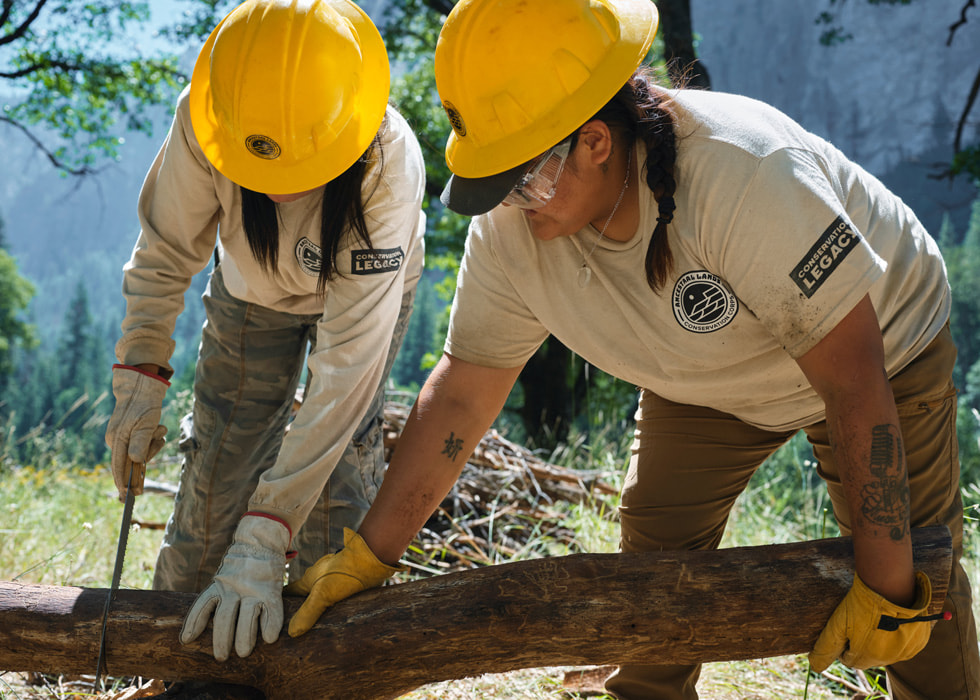
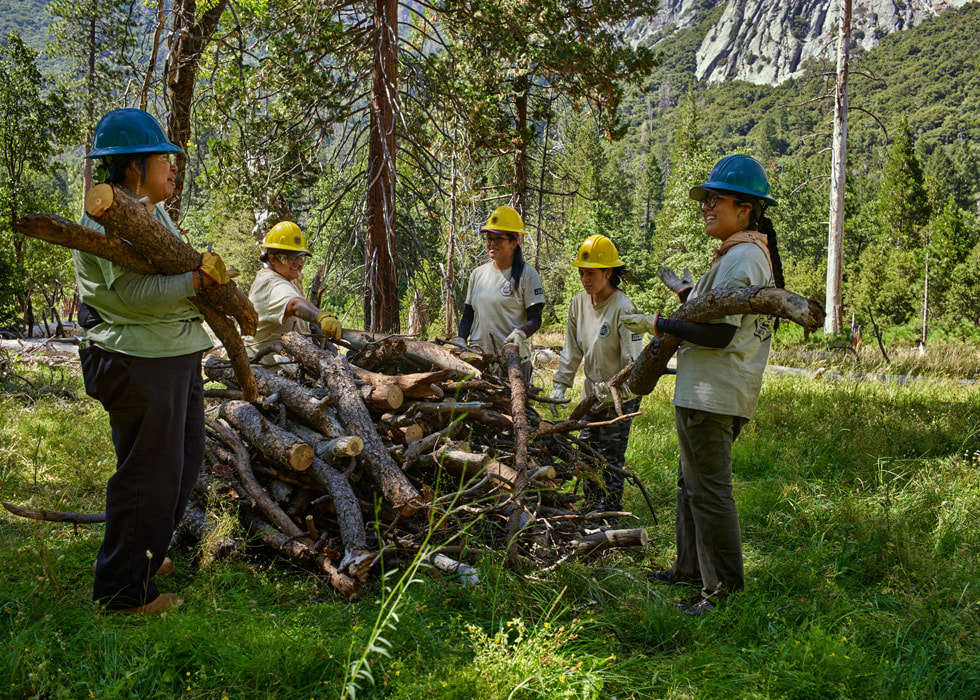
Tucker got her start in land conservation work as an intern with the ALCC. She wanted to learn what crew life looked like, how to recruit young people, and how to build the foundation for a youth crew in her hometown before moving over to Yosemite Ancestral Stewards to get more hands-on experience with work crews. This season, the ALCC brought together an all-women crew. Tucker’s ALCC internship and status as protégé of National Park Service cultural ecologist Irene Vasquez, who she grew up going on the traditional walks alongside, placed her in exactly the right spot to help bring this program to life.
“It started out just with a vision,” Tucker recalls. “To have Native youth reconnect with the land, work that our ancestors did, and getting full-time jobs within the park boundaries, and just finding their way back to their home place.”
“We’re doing that through stewardship of the black oaks because they are an abundant resource and a huge connective cultural resource to our elders and to, hopefully now at least, a handful more of our youth,” she continues. “We started out collecting acorns here in this grove in El Capitan, and then those saplings were shipped off and we’re able to plant them. Now we’re just trying to clear space for those babies to grow and continue on that type of work.”
El Capitan is just one meadow in the almost 750,000 acres that comprise Yosemite National Park. And according to the National Park Foundation, America’s National Park System encompasses more than 85 million acres, many of which sit on tribal land and are under threat from the increasing negative impacts of climate change. The Oak Fire of 2022, which destroyed nearly 20,000 acres in Mariposa — many of which housed Indigenous tribes — as well as this season’s Pika Fire, carried smoke and flames within the park’s boundaries. Both incidents were stark reminders of the ongoing threat of wildfire. To mitigate climate change impact on Earth's natural resources, it's going to take multiple solutions — from multiple voices. And as Long describes, it also takes everyone understanding the original stewards' connection to the land to save it.
“We have an intertwined relationship that we take advantage of because the planet provides so much for us,” Long explains. “Plants provide food, the soil provides nutrients for the plants to grow and to feed us. Soil can also have other purposes, like medicine. There’s a lot of medicine microbes found in the soil that benefit us. Trees give us oxygen, they store carbon. They do so many things for us that we overlook. And it’s easy to because you see them every day. But we need to start treating them with more respect the way they treat us with care.”
ALCC crew lead Gabrielle Draper, who is Zuni and Diné, grew up learning Zuni traditions, stories, and prayers from her grandfather and father, knowing that one day she’d carry the responsibility of sharing those learnings with others.
“My grandpa always told me if I ever feel like I’m heavy-hearted, or I got things that I don’t want to talk out with people, I can always go out and pray to plants, to bugs — especially ants,” Draper remembers. “He always told me they’re strong, even though they’re small. He always told me that going outside is a good outlet to go and heal yourself because the earth has its own energy and ways to heal people.”
“The majority of these national parks are very connected to not only my community, but all of these other Indigenous communities, because there’s places that are considered to be shrines — there’s petroglyphs and pictographs,” Draper continues. “To me, those are very important because if they’re all wiped away, all of those prayers are going to be wiped away.”
For Draper and the other Indigenous members of the crew, the stakes are higher than protecting national parkland — they’re also preserving history and building a foundation for their future.
Share article
Media
-
Text of this article
-
Images in this article
